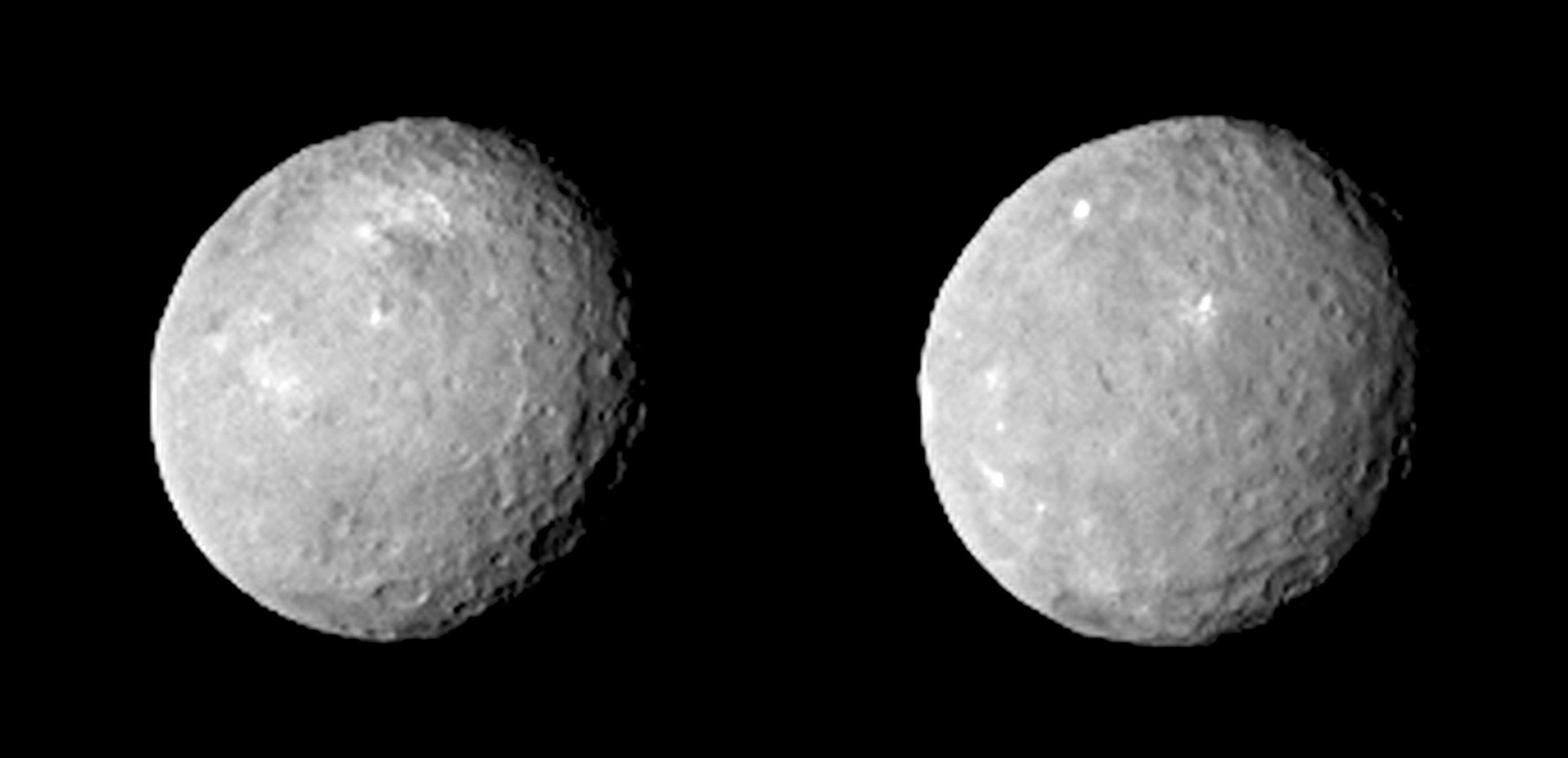
NASA's Dawn spacecraft will have plenty of mysteries to investigate when it begins orbiting the dwarf planet Ceres next month, as the probe's latest photos attest.
Dawn's most recent images of Ceres, taken Feb. 12 at a distance of 52,000 miles (83,000 kilometers) away, show an abundance of craters on the dwarf planet, as well as numerous bright spots that have scientists baffled.
"As we slowly approach the stage, our eyes transfixed on Ceres and her planetary dance, we find she has beguiled us but left us none the wiser," Dawn principal investigator Chris Russell of UCLA said in a statement. "We expected to be surprised; we did not expect to be this puzzled."
The new photos, which have a resolution of 4.9 miles (7.8 km) per pixel, are the sharpest ever taken of Ceres, NASA officials said.
A large, flickering white spot was also visible in photos Dawn took of Ceres last month.
"We can confirm that it is something on Ceres that reflects more sunlight, but what that is remains a mystery," Dawn mission director and chief engineer Marc Rayman, of NASA's Jet Propulsion Laboratory in Pasadena, California, told Space.com via email at the time
Dawn could clear up the mystery soon. The probe is scheduled to enter orbit around the 590-mile-wide (950 km) Ceres, the largest body in the main asteroid belt between Mars and Jupiter, on the night of March 5. Dawn will start studying Ceres in earnest six weeks after that; the probe is scheduled to work its way down to its first science orbit on April 23.
Get the Space.com Newsletter
Breaking space news, the latest updates on rocket launches, skywatching events and more!
The $466 million Dawn mission launched in September 2007 to study the asteroid belt's two biggest denizens — the protoplanet Vesta, which is 330 miles (530 km) wide, and Ceres. Dawn orbited Vesta from July 2011 through September 2012, when it departed for Ceres.
Dawn's observations of these two planetary building blocks should help scientists better understand the solar system's early days, NASA officials said.
Dawn is scheduled to study Ceres from a variety of orbits through June 2016, when the probe's mission will come to an end.
Follow Mike Wall on Twitter @michaeldwall and Google+. Follow us @Spacedotcom, Facebook or Google+. Originally published on Space.com.
Join our Space Forums to keep talking space on the latest missions, night sky and more! And if you have a news tip, correction or comment, let us know at: community@space.com.

Michael Wall is a Senior Space Writer with Space.com and joined the team in 2010. He primarily covers exoplanets, spaceflight and military space, but has been known to dabble in the space art beat. His book about the search for alien life, "Out There," was published on Nov. 13, 2018. Before becoming a science writer, Michael worked as a herpetologist and wildlife biologist. He has a Ph.D. in evolutionary biology from the University of Sydney, Australia, a bachelor's degree from the University of Arizona, and a graduate certificate in science writing from the University of California, Santa Cruz. To find out what his latest project is, you can follow Michael on Twitter.









